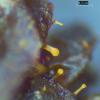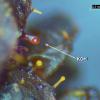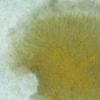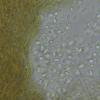
21-12-2025 09:32
Hello.A tiny ascomycete found embedded in wood in

21-12-2025 21:32
Pol DebaenstHello, Garden, Burgweg 19, Veurne, BelgiumOn 10/1

22-12-2025 23:38
Patrice TANCHAUDBonsoir, récolte sur un mur en pierre, apothéci

22-12-2025 00:47
Patrice TANCHAUDBonsoir, récolte à proximité du milieu dunaire

21-12-2025 21:40
Isabelle CharissouBonjour, j'aimerais connaitre les références de

20-12-2025 23:08
Patrice TANCHAUDBonsoir, récolte sur sol sablonneux dans l'arri�
Gliocladium like fungus
Eduard Osieck,
03-04-2020 14:56
A similar hyphomycete but taller (about 0,5 mm), heads whitish and similar conidia were found on an old basidiocarp of an hydnoid Corticiaceae (cf. Fibrodontia).
Could these concern a Gliocladium or Gliocladium-like species?
Thanks in advance for id help,
Eduard
Josep Torres,
03-04-2020 19:05
Re : Gliocladium like fungus
Hola Eduard
Si fuera mio, para empezar a buscar, lo haría por Stilbella.
Encontrarás información si buscas en el siguiente documento:
"A Monograph of Stilbella and some allied Hyphomycetes"
Saludos cordiales
Si fuera mio, para empezar a buscar, lo haría por Stilbella.
Encontrarás información si buscas en el siguiente documento:
"A Monograph of Stilbella and some allied Hyphomycetes"
Saludos cordiales
Eduard Osieck,
03-04-2020 22:15
Re : Gliocladium like fungus
Hi Josep
Thank you for your reaction. The publication concerned (Seifert 1985) lists 9 genera with species that show a positive KOH-reaction. Most of these genera, with the exception of Gliocladium, do not match with my collections (e.g. being non-synnematous). Unfortunately, none of the Gliocladium species described in this publication is fitting. The species concerned may have been described as “Gliocladium-like anamorph” (with the name of the teleomorph).
Cheers, Eduard
Thank you for your reaction. The publication concerned (Seifert 1985) lists 9 genera with species that show a positive KOH-reaction. Most of these genera, with the exception of Gliocladium, do not match with my collections (e.g. being non-synnematous). Unfortunately, none of the Gliocladium species described in this publication is fitting. The species concerned may have been described as “Gliocladium-like anamorph” (with the name of the teleomorph).
Cheers, Eduard




